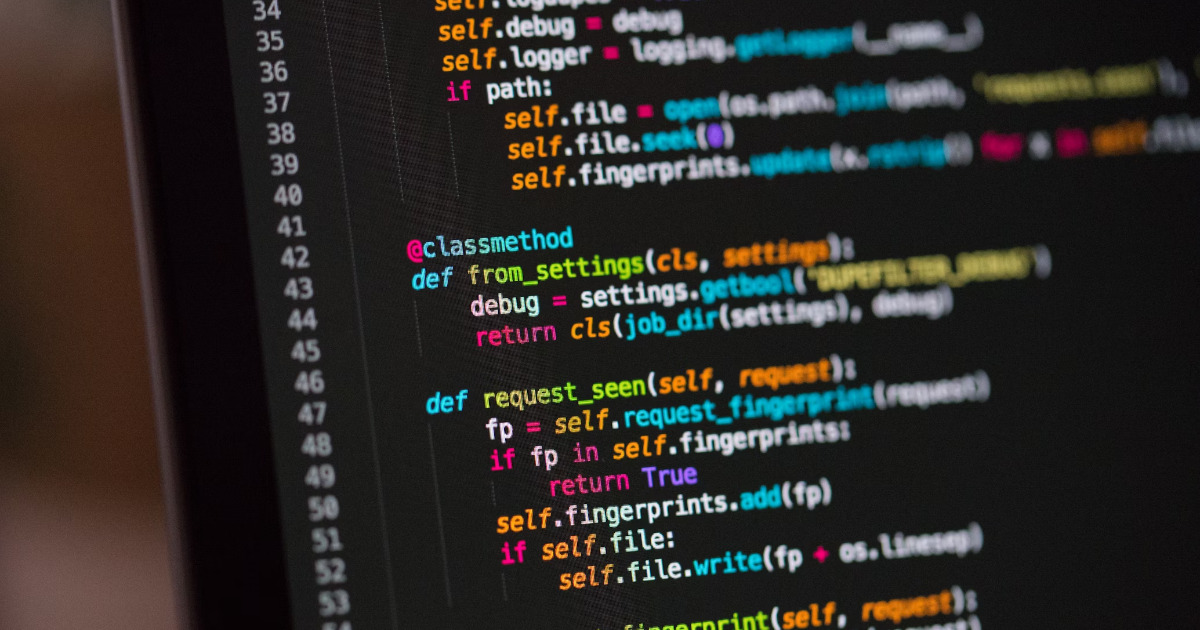The Evolution of Software Development
From Punch Cards to AI: How Programming Transformed Over 80 Years

Software development has transformed more in the last decade than in the previous 50 years combined.
But here's what most developers don't realize: Every major breakthrough in programming history happened because developers got frustrated with the current tools and decided to build something better.
From punch cards to visual programming, from assembly language to AI code generation, each evolution solved real problems that were holding developers back.
👉 Understanding this evolution reveals where software development is heading next.
What You'll Learn About Software Development Evolution 🚀
This isn't just history - it's a roadmap for understanding why we build software the way we do today and where it's going tomorrow.
You'll discover:
- The Foundation Years: How programming began and the first major breakthroughs
- The Language Revolution: Why high-level languages changed everything
- The Tools Explosion: How IDEs and frameworks transformed productivity
- The Internet Era: Web development and the rise of modern software
- The AI Transformation: How artificial intelligence is rewriting the rules
- The Future of Development: What comes after AI-assisted programming
By the end of this guide, you'll understand not just how we got here, but where software development is heading.
Ready to see the big picture? 🤔
The Dark Ages: Programming Before Modern Tools
To understand how revolutionary today's AI-powered development is, you need to see where we started.
In the 1940s and 1950s, programming meant:
- Physical punch cards for every line of code
- No screens, no keyboards, no immediate feedback
- Mistakes meant starting over completely
- Programs took days or weeks to test once
A single typo could waste weeks of work.
The Foundation Years (1940s-1960s): Where Software Development Began
Software development didn't start with a grand vision. It started with mathematicians trying to solve specific problems faster.
The Birth of Programming
1940s: The First Programs
- ENIAC (1946): Required physical rewiring to change programs
- Stored Program Concept: Programs could be stored in memory like data
- Machine Language: Direct communication with hardware using binary
The problem: Programming was incredibly tedious and error-prone. Making changes required understanding hardware at the deepest level.
Assembly Language: The First Abstraction
Late 1940s: Making Code Human-Readable
Instead of writing:
10110000 01100001
Programmers could write:
MOV AL, 97
Why this mattered: Suddenly, humans could read and understand code. This was the first step toward making programming accessible.
The Compiler Revolution
1950s: High-Level Languages Emerge
FORTRAN (1957): The first commercially successful high-level language
- Scientists could write mathematical formulas instead of assembly
- Automatic translation to machine code
- 10x productivity improvement overnight
COBOL (1959): Business-focused programming
- English-like syntax for business applications
- Separation of data from logic
- Still running critical systems today
The breakthrough: Programmers could express ideas in terms closer to human thinking rather than machine operations.
The Language Revolution (1960s-1980s): Abstraction Becomes Power
The 1960s-1980s saw an explosion of programming languages, each solving specific problems that frustrated developers.
Structured Programming: Fighting Complexity
The Problem of the 1960s: "Spaghetti Code"
- Programs became impossible to understand
- GOTO statements created chaotic logic flow
- Debugging was nearly impossible
The Solution: Structured Programming
Pascal (1970): Enforced structured programming principles C (1972): Combined low-level control with high-level structure
Key innovations:
- Functions and procedures
- If/then/else logic
- Loops with clear entry and exit points
- Modular programming
Impact: Programs became maintainable and debuggable for the first time.
Object-Oriented Programming: Modeling Reality
1970s-1980s: The Next Abstraction Level
Smalltalk (1972): Everything is an object C++ (1983): Objects meet system programming
Revolutionary concepts:
- Encapsulation: Data and methods bundled together
- Inheritance: Reusing code through hierarchies
- Polymorphism: Same interface, different implementations
Why it mattered: Programmers could model real-world concepts directly in code.
The Productivity Languages
1980s: Languages for Rapid Development
Python (1989): Readable, simple syntax Perl (1987): Text processing and system administration Visual Basic (1991): Visual programming for business applications
The pattern: Each language solved specific productivity problems, making certain types of development dramatically easier.
The Tools Explosion (1980s-2000s): Development Gets Professional
Programming languages were only part of the evolution. The tools around programming transformed just as dramatically.
The IDE Revolution
From Text Editors to Integrated Environments
Turbo Pascal (1983): First popular IDE
- Integrated editor, compiler, and debugger
- Instant compilation and testing
- Context-sensitive help
Visual Studio (1997): Professional development platform
- IntelliSense code completion
- Visual designers for user interfaces
- Integrated debugging and profiling
Impact: Development became interactive rather than batch-oriented.
Version Control: Collaboration at Scale
The Collaboration Problem:
- Multiple developers working on the same code
- Tracking changes and managing conflicts
- Reverting to previous versions when bugs appeared
Evolution of Version Control:
RCS (1982): Basic file versioning CVS (1990): Centralized version control Subversion (2000): Improved centralized model Git (2005): Distributed version control revolution
Git's breakthrough: Every developer has the complete history, enabling massive collaborative projects like Linux and modern open source.
Build Systems and Package Management
Make (1976): Automated compilation Maven (2004): Java dependency management npm (2010): JavaScript package ecosystem
The pattern: As projects grew complex, automation became essential for productivity.
The Internet Era (1990s-2010s): Software Goes Global
The internet didn't just change how we use software - it revolutionized how we build it.
Web Development: A New Platform
1990s: The Web Changes Everything
HTML (1990): Document markup becomes application UI JavaScript (1995): Interactivity in web browsers PHP (1995): Server-side web programming
Revolutionary concepts:
- Platform independence through browsers
- Instant global distribution
- No installation required
The Framework Revolution
Early 2000s: Solving Web Development Pain Points
Ruby on Rails (2004): "Convention over Configuration"
- Rapid web application development
- Database migrations and scaffolding
- MVC architecture standardized
Django (2005): "The web framework for perfectionists"
- Admin interface generation
- ORM for database abstraction
- Security built-in by default
Impact: What took months now took weeks. Web applications became accessible to far more developers.
The API Economy
Mid-2000s: Services Become Composable
REST APIs (2000s): HTTP-based service communication SOAP/Web Services: Standardized service interfaces Microservices (2010s): Applications as collections of services
Breakthrough: Developers could build applications by combining existing services rather than building everything from scratch.
Mobile Development: Programming Goes Pocket-Sized
iPhone SDK (2008): Native mobile development Android SDK (2008): Open mobile platform React Native (2015): Cross-platform mobile development
New challenges:
- Touch interfaces and mobile UX
- Performance constraints
- App store distribution models
- Cross-platform compatibility
The Modern Era (2010s): Cloud, DevOps, and Continuous Everything
The 2010s brought fundamental changes to how software is deployed, scaled, and maintained.
Cloud Computing: Infrastructure as Code
AWS (2006), Azure (2010), Google Cloud (2011)
Revolutionary changes:
- Servers became programmable resources
- Global scale available to any developer
- Pay-per-use instead of massive upfront costs
Infrastructure as Code:
# Deploy globally scalable infrastructure with configuration
Resources:
WebServer:
Type: AWS::EC2::Instance
Properties:
ImageId: ami-12345678
InstanceType: t2.micro
DevOps: Development Meets Operations
The Traditional Problem:
- Developers wrote code
- Operations deployed and maintained it
- Conflicts and delays were constant
DevOps Solution:
- Continuous Integration (CI)
- Continuous Deployment (CD)
- Infrastructure automation
- Monitoring and observability
Tools that changed everything:
- Docker (2013): Containerization
- Kubernetes (2014): Container orchestration
- Jenkins/GitHub Actions: Automated CI/CD pipelines
The JavaScript Renaissance
Node.js (2009): JavaScript on the server npm (2010): JavaScript package ecosystem React (2013): Component-based UI development TypeScript (2012): Type safety for JavaScript
Impact: JavaScript became a full-stack language, enabling developers to use one language everywhere.
The AI Transformation (2020s): Code That Writes Code
We're now living through the most significant transformation in software development since high-level languages.
AI Code Assistants: Programming at the Speed of Thought
GitHub Copilot (2021): AI pair programming ChatGPT Code Interpreter (2023): Conversational programming Claude Code (2024): AI-powered development workflows
Revolutionary capabilities:
- Code completion that understands context
- Natural language to code translation
- Automatic bug detection and fixing
- Architecture suggestions and code review
What AI Changed Immediately
Before AI:
- Writing boilerplate code manually
- Searching Stack Overflow for solutions
- Debugging through trial and error
- Learning new APIs through documentation
With AI:
- Boilerplate generated instantly
- Solutions explained in context
- Bugs identified and fixed automatically
- APIs learned through conversation
The New Development Paradigm
Traditional Programming:
- Think about the problem
- Research the solution
- Write the code
- Debug the issues
- Refactor for maintainability
AI-Assisted Programming:
- Describe what you want to build
- AI generates initial implementation
- Iteratively refine through conversation
- AI suggests improvements and catches issues
- Focus on architecture and business logic
The shift: From writing code to directing AI to write code.
Current State: Where We Are Today
As of 2025, software development combines decades of evolution with cutting-edge AI capabilities.
The Modern Developer Toolkit
Languages: TypeScript, Python, Rust, Go, Swift Frameworks: React/Next.js, Django, Express, Spring Boot Cloud: AWS/Azure/GCP, Serverless architectures DevOps: Docker, Kubernetes, GitHub Actions, Terraform AI Tools: GitHub Copilot, Claude Code, ChatGPT, Cursor
What Problems Are Solved
✅ Syntax and Boilerplate: AI handles routine code generation
✅ Learning Curves: AI tutors available 24/7
✅ Documentation: Code explains itself through AI
✅ Debugging: AI identifies and suggests fixes
✅ Architecture: AI provides best practice recommendations
What Problems Remain
❌ System Design: Complex architecture decisions
❌ Business Logic: Domain-specific requirements
❌ Performance Optimization: Understanding system bottlenecks
❌ Security: Threat modeling and risk assessment
❌ Team Coordination: Human communication and project management
The Future of Software Development: What Comes Next
Based on the patterns of evolution, here's where software development is heading.
The Next 5 Years (2025-2030)
AI-Native Development:
- Natural language becomes the primary programming interface
- AI agents handle entire feature implementations
- Human developers focus on product vision and architecture
- Code review becomes AI-to-human communication
Predictive Development:
- AI predicts what you want to build before you ask
- Automatic performance optimization and scaling
- Security vulnerabilities caught before code is written
- User experience optimized through AI analysis
The Next Decade (2030-2035)
Intent-Based Programming:
- Describe business outcomes, AI figures out implementation
- No-code becomes truly powerful through AI
- Domain experts build software without traditional programming
- AI handles all technical complexity automatically
Self-Evolving Software:
- Applications that improve themselves over time
- A/B testing and optimization happens automatically
- Bug fixes deployed without human intervention
- Features that adapt to user behavior in real-time
The Long Term (2035+)
Speculative, but based on current trends:
Biological-Software Integration:
- Brain-computer interfaces for direct thought-to-code
- Software that thinks and reasons like humans
- Programs that understand context and intent naturally
Quantum-Enhanced Development:
- Quantum computers solving complex optimization problems
- Massively parallel development processes
- New programming paradigms we can't imagine today
Key Patterns in Software Development Evolution
Looking across 80 years of software development, clear patterns emerge:
Pattern 1: Abstraction Always Wins
Each evolution moved further from machine details:
- Machine code → Assembly → High-level languages → Frameworks → AI generation
The pattern: Successful technologies hide complexity and let developers think at higher levels.
Pattern 2: Productivity Drives Adoption
Technologies succeed when they make development dramatically faster:
- Compilers (10x faster than assembly)
- IDEs (instant feedback vs batch processing)
- Frameworks (weeks instead of months)
- AI (minutes instead of hours)
Pattern 3: Collaboration Scales Impact
Each era improved how developers work together:
- Version control systems
- Open source ecosystems
- Cloud-based development
- AI pair programming
Pattern 4: Problems Create Solutions
Every major advancement solved a frustrating problem:
- Spaghetti code → Structured programming
- Complex deployment → DevOps and containers
- Repetitive coding → AI code generation
The lesson: Today's frustrations are tomorrow's billion-dollar solutions.
What This Evolution Means for Developers Today
Understanding software development evolution isn't just historical curiosity - it's practical guidance for your career.
For Current Developers
Embrace Abstraction: The trend is always toward higher-level thinking. Focus on problem-solving over syntax mastery.
Learn AI Tools: Just as IDEs became essential, AI assistants are becoming mandatory for competitive development.
Understand Fundamentals: Higher abstraction doesn't eliminate the need to understand underlying concepts - it makes that knowledge more valuable.
Stay Adaptable: The pace of change is accelerating. Continuous learning isn't optional.
For New Developers
Start with AI: You're entering development in the AI era. Learn to work with AI from the beginning.
Focus on Problems: Learn to identify and solve problems rather than memorizing syntax.
Understand the Stack: Even with AI, understanding how systems work together is crucial.
Develop Product Sense: As AI handles more technical details, understanding user needs becomes more valuable.
For Business Leaders
Expect Faster Development: AI tools are dramatically reducing development time for many types of applications.
Invest in Learning: Your development teams need time and resources to adopt AI tools effectively.
Rethink Staffing: You may need fewer junior developers but more senior architects and product-focused developers.
Plan for Change: The next 5 years will bring as much change as the last 20. Build adaptable teams and processes.
The Bottom Line: Evolution Never Stops
Software development has evolved from punch cards to AI-powered coding in just 80 years.
Each breakthrough seemed impossible until it happened:
- "Computers will never be fast enough for high-level languages"
- "Object-oriented programming is too complex for practical use"
- "Web applications can't compete with desktop software"
- "AI will never understand programming context"
All of these predictions were wrong.
The pattern is clear: software development consistently moves toward higher abstraction, better productivity, and more accessible tools.
We're not at the end of this evolution - we're at the beginning of the most transformative era yet.
Ready for the Next Evolution?
Understanding where software development came from helps you see where it's going.
The developers who succeed in the next decade will be those who:
- Embrace AI tools while understanding their limitations
- Focus on problems and outcomes rather than just technical implementation
- Learn continuously and adapt to new paradigms
- Use technology to amplify human creativity rather than replace it
The question isn't whether AI will change software development.
It's whether you'll lead that change or be left behind by it.
What aspect of software development evolution excites you most? And more importantly, what will you build with the tools of tomorrow? 🚀
Comments
Please sign in to leave a comment.
This is exactly what I needed to read today. AI assistants have completely changed my workflow!
Recommended Articles

The Return to Software Engineering
Two decades out of date like me? Let's discover how AI tools transform a return to software development, and what this means for anyone coming back to programming today.

Building Modern Web Applications
Discover how modern web development has transformed in 2025. Learn the essential tools, frameworks, and practices that make building web applications faster, smarter, and more powerful than ever before.